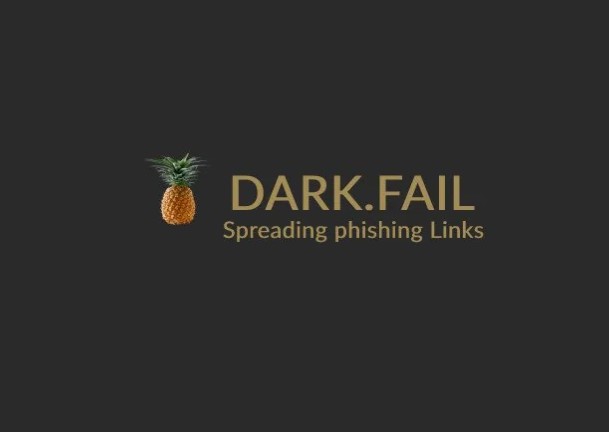In the vast expanse of the internet, there exists a unique and somewhat enigmatic website known as Dark.fail. This platform has garnered significant attention for its role as an informational beacon in the shadowy corners of the digital world. Dark.fail is not just any ordinary site; it functions as a crucial directory, providing links to various online services and sites that are part of the dark web. Its significance lies in its ability to offer users a safer pathway through the often perilous and deceptive environments of underground online spaces.
The purpose of this article is threefold. First, we aim to educate our readers about what Dark.fail truly is and why it matters to those navigating the dark web. Secondly, we delve into the inherent risks and potential benefits of using such a platform. Understanding these aspects is crucial for anyone interacting with or studying the dark web. Lastly, we provide practical guidance on how to safely navigate Dark.fail. Whether you’re a cybersecurity enthusiast, a digital rights advocate, or just a curious netizen, this article will equip you with the knowledge and tools to explore this digital frontier responsibly and safely.
Table of Contents
ToggleDefinition and History of Dark.fail
Dark.fail is an online directory that lists links to darknet sites and services, primarily focusing on those that are operational and verified as authentic. The platform is known for its rigorous verification process, which ensures that the links provided do not lead users to phishing sites or other malicious web pages. It has become an essential tool for navigating the dark web safely, serving as a reliable guide for users looking to access hidden services without falling prey to common online scams.
The history of Dark.fail dates back to a time when the dark web was becoming increasingly mainstream due to public interest in topics like internet privacy, cryptocurrency, and anonymous browsing. As more people ventured into the dark web, the need for a safe navigation guide became apparent. Dark.fail was created to meet this need, providing a trustworthy source of information amidst the notoriously unreliable and dangerous landscape of the dark web.
Overview of Its Primary Uses and the Communities It Serves
Dark.fail’s primary use is to act as a safety net for users of the dark web. By offering verified links to darknet markets, secure messaging services, and other hidden resources, it helps prevent users from falling victim to the scams that frequently plague these secretive parts of the internet. Its audience includes a wide range of users, from cybersecurity researchers and law enforcement agencies seeking to monitor and understand dark web activities, to regular individuals interested in privacy, anti-censorship, and secure communication.
The communities served by Dark.fail are diverse. Privacy advocates appreciate the platform for its commitment to anonymity and security. Journalists and researchers use the site to safely access sources and information that are otherwise difficult or dangerous to reach. Moreover, with the rise of digital rights awareness, a broader audience has begun to utilize Dark.fail as a gateway to explore and understand the darker sides of the internet without compromising their safety.
The Role of Dark.fail in Cybersecurity
How Dark.fail Operates Within the Broader Context of Cybersecurity
Dark.fail plays a unique and vital role within the field of cybersecurity. Unlike conventional cybersecurity tools that protect systems from attacks, Dark.fail provides information that helps users navigate the dark web safely. This navigation is crucial because the dark web, while a haven for privacy, is also rife with cybersecurity threats such as malware, ransomware, and phishing scams. By verifying and listing safe links, Dark.fail acts as a preventive tool, helping users avoid malicious sites and potential security breaches.
The platform’s operation within cybersecurity is also educational. By exposing the workings of dark web sites, Dark.fail inadvertently offers insights into the methods used by cybercriminals. This knowledge is invaluable for cybersecurity professionals who develop defenses against such tactics. Moreover, for users who are new to the dark web, Dark.fail serves as a critical educational resource, teaching them how to identify and avoid potential online threats.
Highlighting Vulnerabilities and Improving Security Measures
One of the most significant contributions of Dark.fail to cybersecurity is its role in highlighting vulnerabilities. By tracking and listing active dark web sites, Dark.fail provides a snapshot of the current landscape, including which services are most used and what types of activities are prevalent. This information can alert cybersecurity experts to emerging trends and potential vulnerabilities in internet security.
For example, if a new darknet market quickly rises in popularity, it could indicate a shift in cybercriminal tactics or a new vulnerability in existing digital systems that criminals are exploiting. By monitoring these developments, cybersecurity professionals can better understand the threat environment and develop more effective security measures to protect users.
Additionally, Dark.fail’s approach can lead to improved security measures by fostering a more informed user base. When users are aware of how to identify safe versus malicious sites, they become less likely to fall victim to common cyber threats. This reduction in victimization not only protects individual users but also decreases the overall success rate of cybercriminal activities, indirectly boosting the security of the digital ecosystem.
Legal and Ethical Considerations
Legal Implications of Using Services like Dark.fail
Navigating the legal landscape while using or operating services like Dark.fail can be complex. While the site itself does not host or engage in illegal activities, its role as a gateway to the dark web places it in a gray area of internet law. The dark web is often associated with illegal activities, including the sale of illicit goods and services. However, it also serves as a platform for legitimate uses, such as protecting dissidents, ensuring journalistic confidentiality, and maintaining privacy.
In the United States and many other countries, the mere act of browsing the dark web or using services like Dark.fail is not illegal. However, the legality changes based on the user’s activities on the dark web. If a user engages in unlawful transactions or accesses illegal content, they can be subject to legal action regardless of the tools they use to get there. Thus, the users of Dark.fail must be acutely aware of the legal boundaries and ensure that their activities remain within the confines of the law.
Furthermore, operators and maintainers of sites like Dark.fail face their own set of legal challenges. They must navigate complex international laws and ensure that their service does not inadvertently promote illegal activities. Compliance with laws such as the General Data Protection Regulation (GDPR) in Europe, or similar privacy and data security laws, is crucial to avoid legal repercussions.
Ethical Debate: Anonymity and Privacy Versus Legal Concerns
The ethical considerations surrounding Dark.fail and similar services often revolve around the balance between anonymity, privacy, and legal concerns. Anonymity and privacy are fundamental to personal freedom and have legitimate purposes, such as protecting whistleblowers, facilitating free speech in oppressive regimes, and preserving personal privacy online. Services like Dark.fail, which promote anonymity, play a crucial role in these scenarios.
However, the same tools that ensure anonymity and protect privacy can also be misused for illegal purposes. This dual use raises ethical questions about the responsibility of service providers like Dark.fail. Should they limit access to their services to prevent misuse, or would such limitations undermine the principles of privacy and freedom of information?
The ethical debate is also shaped by differing perspectives on surveillance and law enforcement. Some argue that tools enabling anonymity hinder law enforcement’s ability to investigate crimes and protect public safety. Others contend that strong anonymity tools are essential to protect personal freedoms in the digital age.
Risks Associated with Using Dark.fail
Exposure to Illegal Activities
One of the primary risks associated with using Dark.fail—or any portal that provides access to dark web resources—is the potential exposure to illegal activities. The dark web is notoriously known for hosting a variety of unlawful content, including drug markets, illegal arms sales, counterfeit currency, and more. While Dark.fail itself does not host these activities, it provides links to sites that might. Users inadvertently may find themselves in environments where illegal transactions are commonplace.
The risk extends beyond mere exposure; there is also the potential for legal consequences. Engaging with illegal activities, even unknowingly, can lead to investigations and legal action. For instance, law enforcement agencies frequently monitor dark web activities as part of cybercrime investigations. Users who inadvertently engage in or facilitate illegal transactions might be subject to scrutiny or charges.
Data Breaches and Privacy Concerns
Another significant risk involves data breaches and privacy concerns. While the dark web and tools like Dark.fail are designed to provide anonymity, they are not immune to cyber threats. Users might encounter malicious sites disguised as legitimate ones, leading to malware infections and data theft. Even with rigorous verification processes, the possibility of a link turning malicious remains a concern due to the dynamic nature of dark web sites.
Statistics on incidents related to similar platforms highlight these risks. For example, a study from the University of Surrey noted that nearly 60% of listings on darknet markets could potentially harm enterprises through services like data theft, hacking services, and malware distribution. Another report from a cybersecurity firm recorded over 15 significant dark web marketplace data breaches in a single year, underscoring the prevalence of cyber threats in these environments.
Practical Tips for Mitigating Risks
To mitigate these risks, users should take several precautions:
- Use Comprehensive Security Software: Employ robust antivirus and anti-malware solutions to protect against malicious software.
- Practice Operational Security: Use VPNs and the Tor browser for an added layer of anonymity. Be cautious about sharing personal information.
- Stay Informed: Keep abreast of the latest cybersecurity trends and threats associated with dark web usage.
- Legal Awareness: Understand the legal implications of browsing or engaging in activities on the dark web. Avoid any sites or activities that are illegal.
How to Access Dark.fail Safely
Navigating to Dark.fail securely and anonymously involves a few critical steps designed to protect your identity and device. By following this step-by-step guide, you can access Dark.fail while minimizing your risk exposure.
Step-by-Step Guide to Accessing Dark.fail
- Prepare Your Device:
- Ensure your computer’s operating system and all software are up to date to protect against vulnerabilities.
- Install reputable antivirus and anti-malware software to defend against potential threats.
- Use a VPN (Virtual Private Network):
- Before opening your browser, connect to a VPN to encrypt your internet traffic. This step hides your real IP address, which is crucial for maintaining anonymity.
- Choose a VPN provider known for strong privacy policies and the absence of logging user activities.
- Access the Tor Browser:
- Download the Tor Browser from its official website. Tor Browser is specifically designed to protect your privacy and anonymity by routing your web traffic through multiple layers of encryption.
- Ensure you download Tor only from its official site to avoid malicious versions.
- Navigate to Dark.fail:
- Open the Tor Browser and ensure that all privacy settings are adjusted for maximum security (the Tor Browser typically sets these by default).
- Type the URL for Dark.fail directly into the browser:
http://dark.fail. Always verify you have the correct URL to avoid phishing attempts.
- Browse Safely:
- Once on Dark.fail, avoid clicking on links without considering their destination. Even though Dark.fail verifies links, continuous caution is necessary.
- Do not download files or enable scripts that could compromise your anonymity and security.
Tips for Using VPNs and TOR for Enhanced Safety
- Select a Reputable VPN:
- Choose a VPN that does not keep logs of user activity and offers strong encryption. Providers like NordVPN, ExpressVPN, and ProtonVPN are known for their robust security features.
- Configure Tor Settings:
- Within the Tor Browser, you can adjust the security level to “Safest” which disables JavaScript on all sites by default. This can help protect against scripts designed to compromise your security.
- Use Security-Focused Operating Systems:
- Consider using security-focused operating systems like Tails or Whonix, which are designed to be run from a USB drive and are optimized for anonymity and security.
- Stay Informed:
- Keep up to date with any news regarding security vulnerabilities associated with Tor and VPNs. Being informed helps you take proactive measures to maintain your security and anonymity.
Best Practices for Users of Dark.fail
Navigating Dark.fail and the dark web securely requires adherence to a set of best practices designed to protect your privacy, security, and overall digital wellbeing. Here are some crucial guidelines and tips to help you safely interact with Dark.fail and recognize potential scams and threats.
Guidelines for Safely Navigating and Interacting with Dark.fail
- Use Trusted Devices and Networks:
- Always access Dark.fail from a device that is secure and not compromised. Avoid using public or untrusted computers where malware and keyloggers may be installed.
- Similarly, connect to Dark.fail using a trusted network. Avoid public Wi-Fi networks which can be susceptible to man-in-the-middle attacks.
- Maintain Anonymity:
- In addition to using VPNs and the Tor Browser, consider using pseudonyms and avoid sharing personal information that could link your identity to your activities on Dark.fail.
- Verify Links and Sources:
- Dark.fail provides verified links, but it’s essential to double-check URLs and ensure they match exactly to avoid phishing sites. Bookmark the correct URL after your initial visit to prevent typos in future sessions.
- Keep Communication Encrypted:
- When communicating through services found on Dark.fail, use end-to-end encrypted messaging apps or encrypted email services. This protects the contents of your communications from interception.
- Regularly Update Security Software:
- Keep your security software, Tor Browser, and VPN up-to-date to protect against the latest threats and vulnerabilities.
Advice on Recognizing and Avoiding Potential Scams and Threats
- Be Skeptical of Too-Good-to-Be-True Offers:
- Scammers often lure users with offers that seem too good to be true, such as significantly discounted products or services. Always approach such offers with skepticism.
- Learn Common Scam Tactics:
- Familiarize yourself with common scam tactics used on the dark web, such as advance-fee scams, phishing attempts, and fake marketplaces. Awareness is a powerful tool against fraud.
- Use Escrow Services When Possible:
- If you must engage in transactions, use escrow services whenever possible. Escrow can provide a level of protection for both parties in a transaction.
- Check Reviews and Feedback:
- Before engaging with any services or sellers found through Dark.fail, look for reviews and feedback from other users. This can be challenging on the dark web, but some forums and boards discuss the reputability of various services.
- Trust Your Instincts:
- If something feels off about a site or an offer, trust your instincts and proceed with caution. It’s better to miss out on a potential opportunity than to fall victim to a scam.
The Future of Dark.fail and Similar Platforms
Potential Trends and Developments in Anonymous Browsing
As digital privacy concerns continue to grow among the general population, the demand for anonymous browsing tools and platforms like Dark.fail is likely to increase. Here are some potential trends and developments that could shape the future of these platforms:
- Enhanced Privacy Technologies:
- We can expect advancements in technologies that enhance anonymity and privacy. Innovations in encryption, blockchain, and decentralized networks may offer new ways for users to browse anonymously while reducing their vulnerability to tracking and surveillance.
- Integration of AI and Machine Learning:
- Artificial intelligence (AI) and machine learning could be used to improve the security features of anonymous browsing platforms. These technologies might help in detecting phishing attempts and other malicious activities more efficiently than current methods.
- Increased Mainstream Acceptance:
- As awareness of digital privacy issues becomes more mainstream, tools for anonymous browsing may see broader adoption beyond the tech-savvy and privacy-conscious communities. This could lead to more user-friendly interfaces and features designed for the average consumer.
- Growth of Privacy-Focused Ecosystems:
- The rise of privacy-focused ecosystems, including operating systems and mobile devices designed with privacy as a central feature, could further support platforms like Dark.fail. These ecosystems would prioritize user anonymity and data security at their core.
Speculating on the Future Legal Landscape Affecting Such Platforms
The legal landscape surrounding anonymous browsing platforms like Dark.fail is poised for significant developments:
- Stricter Regulations and Compliance Requirements:
- As governments around the world grapple with the dual challenges of protecting privacy rights and ensuring national security, we might see stricter regulations coming into play for platforms offering anonymity. These could include mandatory compliance checks or requirements to prevent misuse.
- International Collaboration on Cyber Laws:
- There may be increased international collaboration to create standardized cyber laws that address the global nature of the internet and anonymous browsing platforms. Such efforts would aim to tackle cybercrime effectively while respecting users’ rights to privacy and freedom of expression.
- Legal Debates over Anonymity:
- The legal status of anonymous browsing tools will likely continue to be a topic of intense debate. Legal challenges and court cases may focus on the extent to which individuals can legally use such tools, especially in contexts involving national security or criminal investigations.
- Balancing Acts:
- Future legal frameworks may attempt to balance the need for anonymity and privacy with the needs of law enforcement and governmental oversight. This could result in complex legal precedents that define the boundaries of lawful use of anonymous browsing platforms.
Conclusion
Throughout this article, we’ve explored the multifaceted platform Dark.fail, examining its significance, functionalities, and the broader implications it holds within the realms of cybersecurity, legality, and ethical considerations. Dark.fail serves as a critical navigation tool for those venturing into the dark web, providing verified links to ensure safer browsing away from the numerous threats that lurk in hidden corners of the internet.
We delved into the legal and ethical challenges associated with using Dark.fail, highlighting the delicate balance between ensuring privacy and anonymity and adhering to legal standards. The risks associated with using such platforms were discussed, emphasizing the importance of vigilance against potential scams and cyber threats. Furthermore, we provided a detailed guide on how to access and navigate Dark.fail safely, underscoring the use of VPNs and the Tor browser to enhance security.
As we look to the future, the landscape of anonymous browsing and platforms like Dark.fail is set to evolve with advancements in technology and potentially shifting legal frameworks. These changes will likely continue to shape how users interact with the dark web and prioritize their digital privacy and security.
In closing, it is paramount that users of Dark.fail and similar platforms engage with these tools responsibly. Continuous education on cybersecurity practices is essential for maintaining safety and privacy online. Users should remain informed about the latest developments in cybersecurity and stay vigilant about protecting their digital footprints. By fostering a deeper understanding of the digital environment and the tools available, individuals can navigate the internet more securely and confidently, ensuring they leverage the benefits of platforms like Dark.fail while mitigating associated risks.







